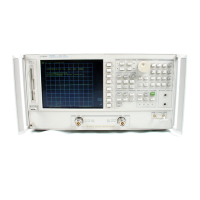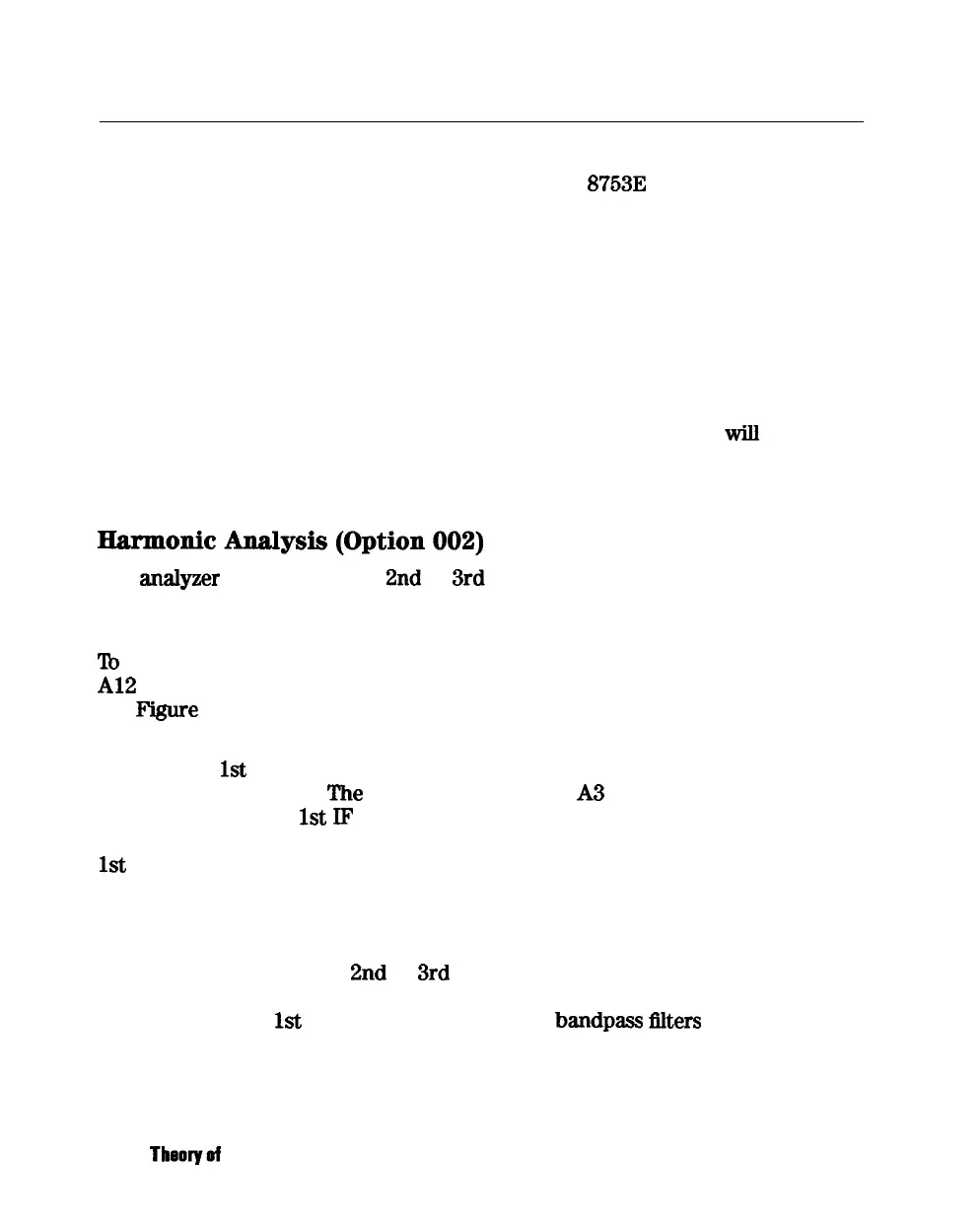Source Operation in other Modes/Features
Resides the normal network analyzer mode, the HP 87533 has extra modes and
features to make additional types of measurements The following describes
the key differences in how the analyzer operates to achieve these new
measurements
Frequency Offset
The analyzer can measure frequency-translating devices with the frequency
offset feature.
The receiver operates normally. However, the source is pretuned to a different
frequency by an offset entered by the user. The device under test
will
translate
this frequency back to the frequency the receiver expects. Otherwise, phase
locking and source operation occur as usual.
HarmonicAnalysis(Option002)
The
analyzer
can measure the
2nd
or
3rd
harmonic of the fundamental
source frequency, on a swept or CW basis, with the harmonic analysis feature
(optional).
To
make this measurement, the reference frequency (normally 1 MHz) from the
Al2
reference assembly to the All phase lock assembly is divided by 1, 2, or 3.
See
F’igure
12-6.
The fractional-N assemblies are also tuned so that the correct harmonic (comb
tooth) of the
1st
LO is 0.500 or 0.333 MHz below the source frequency instead
of the usual 1.000 MHz.
‘l’he
analyzer pretunes the A3 source normally,
then phase locks the
1st
IF
to the new reference frequency to sweep the
fundamental source frequency in the usual way. The key difference is that the
1st
IF (output from the R sampler) due to the fundamental and used for phase
locking is now 0.500 or 0.333 MHz instead of 1.000 MHz.
Since the chosen VCO harmonic and the source differ by 0.500 or 0.333 MHz,
then another VCO harmonic, 2 or 3 times higher in frequency, will be exactly
1.000 MHz away from the
2nd
or
3rd
harmonic of the source frequency. The
samplers, then, will also down-convert these harmonics to yield the desired
components in the
1st
IF at 1.000 MHz. Narrow
bandpass
flters in the receiver
eliminate all but the 1.000 MHz signals; these pass through to be processed and
displayed.
12-22
Theoryof
Operation

